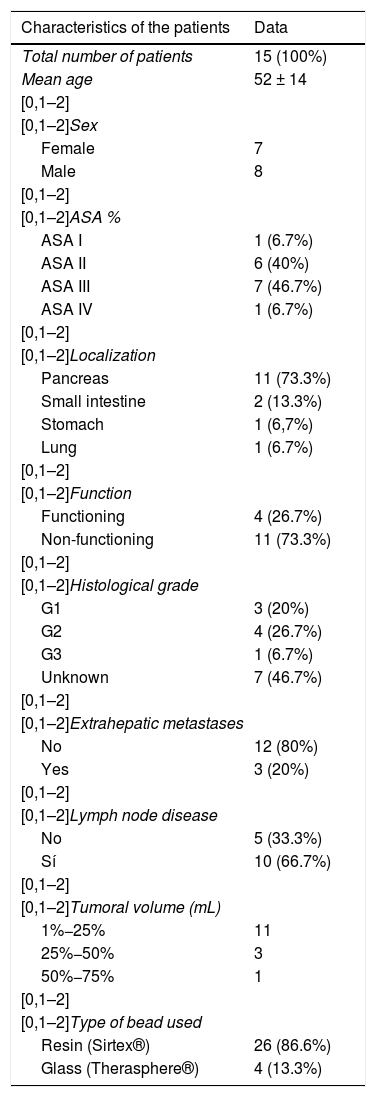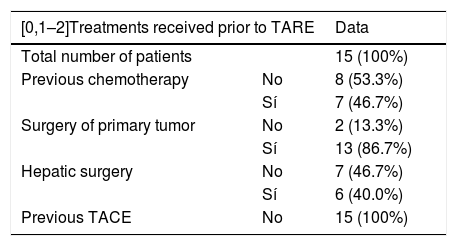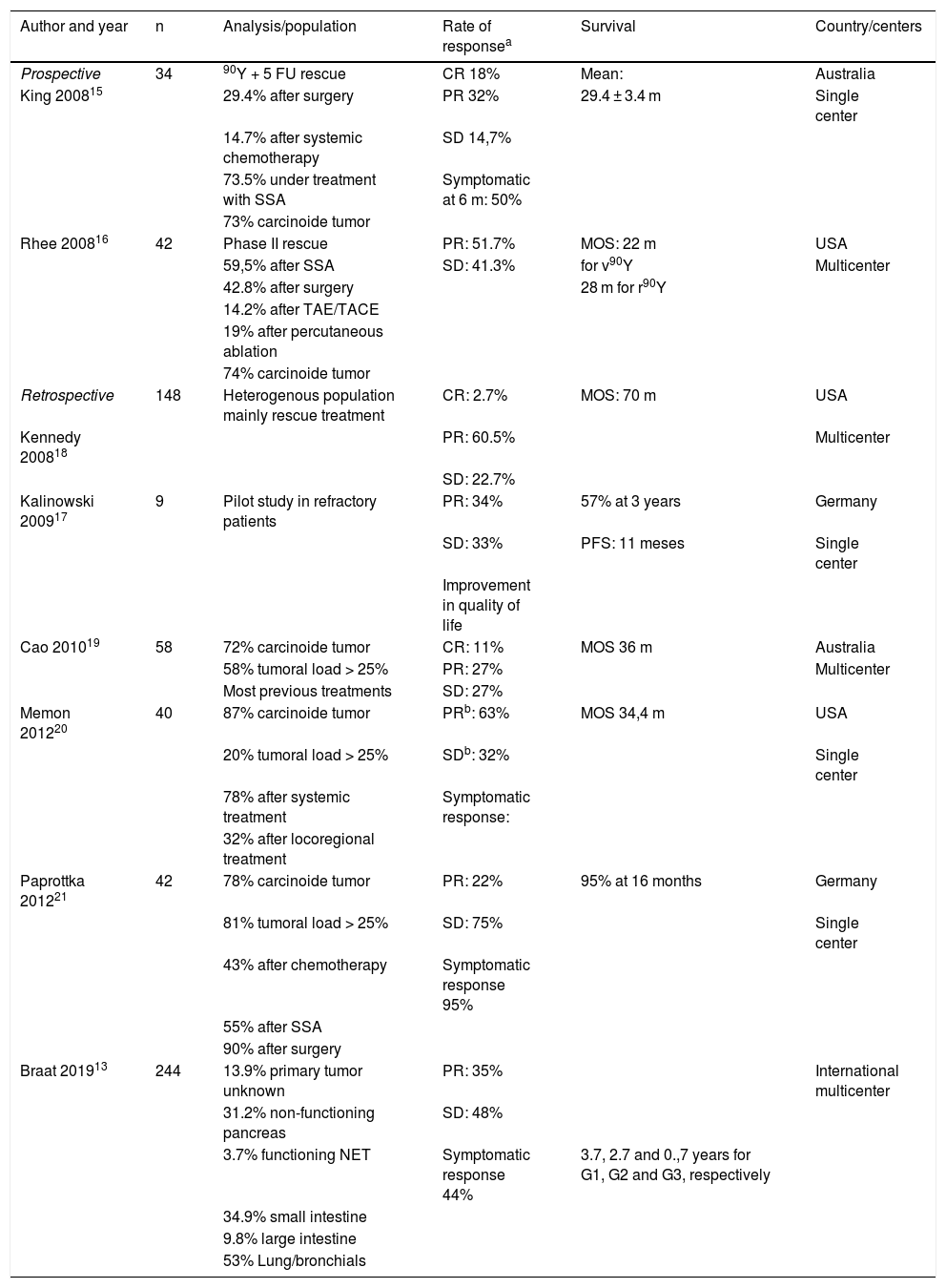Neuroendocrine tumors (NETs) debut in 75% of cases with liver metastases (LMNETs), whose therapeutic approach includes surgical resection and liver transplantation, while liver radioembolization with 90Y-microspheres (TARE) is reserved for non-operable patients usually due to high tumor burden.
We present the accumulated experience of 10 years inTARE treatment of LMNETs in order to describe the safety and the effectiveness of the oncological response in terms of survival, as well as to detect the prognostic factors involved.
Material and methodsOf 136 TARE procedures, performed between January 2006 and December 2016, 30 LMNETs (11.1%) were retrospectively analyzed. The study measures were: Tumor response, time to liver progression, survival at 3 and 5 years, overall mortality and mortality associated with TARE. The radiological response assessment was assessed using RECIST 1.1 and mRECIST criteria.
ResultsAn average activity of 2.4 ± 1.3 GBq of 90Y was administered. No patient presented postembolization syndrome or carcinoid syndrome. There were also no vascular complications associated with the procedure. According to RECIST 1.1 criteria at 6 months, 78.6% presented partial response and 21.4% stable disease, there was no progression or complete response (1 by mRECIST). Survival at 3 and 5 years was 73% in both cases.
ConclusionTARE treatment with 90Y-microspheres in LMNETs, applied within a multidisciplinary approach, is a safe procedure, with low morbidity, capable of achieving a high rate of radiological response and achieving lasting tumor responses.
Los tumores neuroendocrinos (TNE) debutan en un 75% de los casos con metástasis hepáticas (MHTNE), cuyo abordaje terapéutico incluye resección quirúrgica y trasplante hepático, mientras que la radioembolización hepática con microesferas cargadas con 90Y (TARE) se reserva para pacientes no operables habitualmente por elevada carga tumoral.
Presentamos la experiencia acumulada de 10 años en el tratamiento con TARE de MHTNE con el objetivo de describir la seguridad de la técnica y la efectividad de respuesta oncológica en términos de supervivencia, así como detectar los factores pronósticos implicados en ello.
Material y métodosDe 136 procedimientos de TARE, realizados entre enero 2006 y diciembre de 2016, 30 MHTNE (11,1%), fueron analizados de manera retrospectiva. Las medidas a estudio fueron: Respuesta tumoral, tiempo hasta la progresión hepática, supervivencia a los 3 y 5 años, mortalidad global y mortalidad asociada a TARE. La respuesta radiológica al tratamiento se valoró mediante criterios RECIST 1.1 y mRECIST.
ResultadosSe administró una actividad media de 2,4 ± 1,3 GBq de 90Y. Ningún paciente presentó síndrome postembolización ni síndrome carcinoide. Tampoco se registraron complicaciones vasculares asociadas al procedimiento. Según criterios RECIST 1.1 a los 6 meses, el 78,6% presentó respuesta parcial y 21,4% enfermedad estable, no se registró progresión ni respuesta completa (1 por mRECIST). La supervivencia a los 3 y 5 años fue del 73% en ambos casos.
ConclusiónEl tratamiento de TARE con 90Y en MHTNE, aplicado en el seno de un abordaje multidisciplinar, es un procedimiento seguro, con baja morbilidad, capaz de lograr una alta tasa de respuesta radiológica y alcanzar respuestas tumorales duraderas.
Article

Revista Española de Medicina Nuclear e Imagen Molecular (English Edition)















